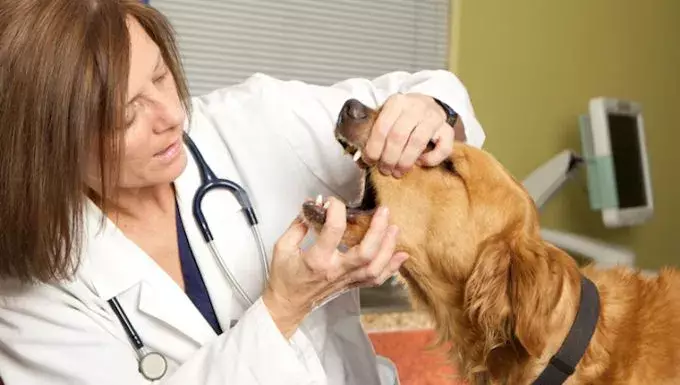Gingival fibrosarcoma is a subtype of oral cancer that primarily affects dogs, originating in the fibrous tissue of the gums. As a pet owner, recognizing the nuances of this condition is vital in ensuring prompt diagnosis and treatment. While any dog might develop this cancer, it is notably more prevalent among older dogs, particularly those over seven years, and seems to impact male dogs more frequently than females. Understanding the symptoms, potential causes, and treatment options will equip dog owners with the necessary knowledge to act quickly if needed.
Detection of gingival fibrosarcoma can be challenging, as its symptoms may initially appear subtle or unrelated to cancer. Pet owners should remain vigilant for signs that may indicate the presence of this disease. Some of the most prevalent symptoms include:
1. **Excessive Drooling**: While some drooling is normal, an increase in drooling, especially if accompanied by other symptoms, can signal an underlying issue.
2. **Halitosis**: Persistent bad breath is another alarm bell. Often resulting from oral issues or infections, it can be linked to underlying tumors or growths in the mouth.
3. **Difficulty Eating**: If your dog exhibits signs of discomfort while eating or shows a reluctance to eat altogether, this may warrant veterinary attention.
4. **Weight Loss**: Unexpected weight loss can arise from numerous health issues, including oral cancers that impede the ability to eat.
5. **Presence of Growths**: Noticeable lumps or growths in or around the mouth can be indicative of gingival fibrosarcoma.
6. **Blood**: Any occurrence of blood from the mouth or around teeth should alert an owner to seek veterinary care.
7. **Loose Teeth**: Tumors can affect the stability of teeth in the jaw, leading to them becoming loose.
8. **Swelling of Lymph Nodes**: Swelling in the lymph nodes can also suggest an immune response to an underlying malignancy.
The mosaic of these symptoms emphasizes the need for regular dental check-ups and awareness of changes in your pet’s health.
Despite extensive research into canine cancers, the precise origins of gingival fibrosarcoma remain elusive. Several factors have been hypothesized to contribute to its development:
– **Age**: The age factor is significant, with older dogs being at higher risk, suggesting a possible cumulative effect of external exposures over time.
– **Radiation Exposure**: Previous exposure to radiation either due to medical treatment or environmental factors might increase risk.
– **Infections**: Certain oral infections could potentially lead to or accelerate the development of tumors.
– **Chemical Exposure**: The potential impact of exposure to various chemicals, whether through the environment or household products, is another factor suggesting a link.
– **Breed Predisposition**: Certain breeds, such as Golden Retrievers, may have a genetic predisposition to develop this condition, highlighting the importance of breed-specific vigilance.
Given these factors, the relationship between genetics and environment becomes critical in managing the risk of gingival fibrosarcoma.
If these symptoms are noted, visiting a veterinarian should be the first action. Your vet will typically begin with a thorough examination of your dog’s health history and a physical assessment, focusing specifically on the oral cavity for any abnormal growths. A biopsy will often be required to confirm a diagnosis.
Treatment strategies vary widely based on the tumor’s size and severity. For smaller growths, **cryosurgery** may be employed, freezing and subsequently removing the tumor. Larger tumors may require more involved surgical procedures, and in some scenarios, adjunct therapies such as **radiation therapy** may be recommended to manage the cancer.
Post-treatment care is crucial to ensure your dog’s recovery. Alterations to diet, often necessitating a shift to soft or wet foods, are commonly needed. Additionally, veterinarians may prescribe pain relief medications to support recovery, and adherence to prescribed dosages and schedules is essential.
Understanding gingival fibrosarcoma is imperative for dog owners. By being aware of the symptoms and potential risks associated with this condition, owners can facilitate timely interventions that may improve their pet’s health outcomes. Regular consultations with a veterinarian and being proactive about oral health can ensure that pets receive the best care possible. If you have experience with a dog suffering from this condition, sharing insights and fostering open communication with your veterinarian can significantly impact recovery and management strategies.

